I. 30 YEARS OF THE HUE ANCIENT CAPITAL RELICS COMPLEX BEING HONORED BY UNESCO AS A WORLD HERITAGE SITE (1993-2023)
For more than 300 years (1636-1945), Hue was the capital of 9 Nguyen lords in Dang Trong (1636-1775), the capital of the Tay Son dynasty (1788-1801), and then the capital of the unified nation under 13 Nguyen kings (1802-1945). As the capital, Phu Xuan - Hue is the place where the quintessence of the Vietnamese people converges, and is also the place where human civilizations meet and exchange. Among the ancient capitals of Vietnam, Hue is the only ancient capital that still preserves the overall architectural art of the royal court with a system of citadels, palaces, temples, mausoleums, with intangible cultural heritages, containing many values symbolizing the intelligence and soul of the Vietnamese people.
However, through wars, harsh weather, nature and historical changes, that heritage treasure has been severely damaged. Nearly two-thirds of the structures in the Complex of Hue Monuments have become ruins; the remaining ones are also in a state of serious damage. Intangible heritages have also been lost and scattered. The royal festival system no longer existed after the Nguyen Dynasty ended; the forms of royal performances were scattered and gradually entered folk life.
According to UNESCO's assessment, the conservation of Hue Monuments is moving into a phase of stability and sustainable development. Photo: Chinhphu.vn
1. Restoration, conservation and promotion of the Hue Monuments Complex before being recognized by UNESCO
Clearly identifying the importance and urgency of protecting and promoting cultural heritages, despite many difficulties due to overcoming the consequences of war and natural disasters, the Party and State have focused on protecting and preserving cultural heritages, including the Hue Monuments Complex and intangible cultural heritages.
In May 1976, the Binh Tri Thien Revolutionary People's Committee issued a decision to temporarily confirm public cultural facilities and name 35 historical sites in the area. In 1979, four historical sites, the Imperial Citadel - Imperial City, Minh Mang Tomb, Tu Duc Tomb and Khai Dinh Tomb, were specially recognized as national historical sites.
In 1981, the Director General of UNESCO issued an appeal to save Hue's cultural heritage; the province has developed and implemented new strategies and policies in preserving and promoting heritage values in conjunction with orientations for socio -economic development.
In 1982, the Hue Historical and Cultural Relics Management Company was established (10 years later, it was renamed the Hue Monuments Conservation Center, a public service unit under the Provincial People's Committee), aiming to comprehensively manage the Complex of Monuments. By 1991, most of the important relics had been recorded for protection (based on the 1984 Monuments Protection Ordinance).
2. 30 years of Hue Monuments Complex being recognized by UNESCO as a World Heritage Site
In 1992, a comprehensive scientific dossier on the Hue Monuments was established and submitted to the UNESCO World Heritage Committee. On December 11, 1993, the Hue Monuments Complex was recognized by UNESCO as a World Cultural Heritage. This was a significant event, not only raising Vietnam's position in the world but also honoring the value of Vietnam's cultural heritage to a new level; contributing to opening up prospects for the conservation and promotion of the value of these special resources.
On February 12, 1996, the Prime Minister issued Decision No. 105/TTg approving the Project on planning, preserving and promoting the value of Hue Monuments for the period 1996-2010. On August 25, 2008, the Government approved the Project on building Hue into a typical Festival city of Vietnam. Next, the Prime Minister approved the Project on building Hue into one of the major cultural and tourist centers of the country.
On May 25, 2009, the Politburo issued Conclusion 48-KL/TW on the construction and development of Thua Thien Hue province and Hue city until 2020. On June 17, 2009, the Government approved the master plan for socio-economic development of Thua Thien Hue province until 2020. The Prime Minister issued Decision 818/TTg approving the project to adjust the planning, preserve and promote the value of Hue Monuments in the period 2010-2020. These are important legal bases for Thua Thien Hue to implement the preservation and promotion of the value of Hue Monuments after the Complex of Hue Monuments was recognized as a World Heritage Site.
The preservation of cultural heritage values is always closely linked to the process of exploiting, promoting and creating conditions for the socio-economic development of the province and the Central region. The quintessence of Hue, which seemed to have been lost, has gradually revived in community activities, in the daily thinking and work of Hue people. From there, the original appearance has been restored and the tangible and intangible cultural values of a historical capital have been raised to a new level, creating great confidence in the development of culture - tourism, contributing to expanding exchanges and integration into the cultural life of the Vietnamese community.
In particular, the orientation of Hue cultural heritage values and its impact on the development of Thua Thien Hue is becoming clearer and more effective. The image of Hue cultural heritage in the context of integration and sustainable development is increasingly clear, contributing significantly to preserving the cultural identity of the nation, serving tourism development, constantly improving the cultural and spiritual life of the people and especially winning the hearts of domestic tourists as well as friends around the world.
Art performance reenacting the construction process of Hue Citadel. Photo: VietnamPlus
To date, more than 200 works have been restored and reconstructed. The relics that have been preserved, restored, and embellished all ensure national and international scientific principles of conservation. Many research topics have high applicability, serving the management and preservation of heritage, and some research projects have won awards in technical and technological innovation competitions.
Over the past 30 years, more than 100 research books on Hue have been published; more than 80 scientific dossiers on relics have been built to serve the research and conservation of relics. Many relic dossiers have been submitted to all levels for recognition as provincial and national relics. In addition, through international cooperation, dozens of scientific research, conservation, restoration and human resource training projects have been implemented to serve the cause of conservation and promotion of heritage values.
The conservation and restoration of the environmental landscape of heritage sites has been specialized. The infrastructure of the relic sites such as the road system, lighting system has been gradually upgraded; the garden system, relic landscape, fire prevention and fighting system, lightning protection system, etc. have been basically restored or completely built. Most of the main relics have been invested in restoration, restoration of the garden system, landscape and additional tree planting in buffer areas, upgrading the infrastructure and roads of Hue city, roads in the Citadel, roads to some relic sites. In addition, the restoration and restoration of both banks of the Huong River, dredging of the Ngu Ha River and the restoration of the Ho Thanh Hao embankment, etc. have gradually restored the inherent landscape value of the ancient capital of Hue.
The collection of Nguyen Dynasty antiquities is also of interest. From 2002 to present, the Hue Royal Antiquities Museum has received nearly 350 artifacts from individuals at home and abroad, enriching the Museum's collection and serving the display work, increasing the attractiveness of the museum.
In recent years, Thua Thien Hue has paid attention to promoting the exploitation and promotion of the strengths of cultural heritage to develop tourism. Thanks to good promotion policies, the number of tourists to Hue has increased rapidly over the years (excluding 2020 and 2021, due to the impact of the COVID-19 pandemic) and revenue has also increased. Revenue from entrance tickets has greatly contributed to the reinvestment of relic restoration as well as effectively serving scientific research and training of human resources for the conservation and restoration of cultural heritages of the ancient capital of Hue.
Tourism development has changed the face and brought Hue many opportunities for economic development, cultural exchange, employment, increased income for workers, technical facilities have been consolidated and enhanced, and people's lives have been improved day by day.
The province has paid attention to the preservation and promotion of Hue heritage values in education in schools, to propagate and raise the sense of responsibility of the community and the pride of each citizen in protecting, preserving and promoting the value of Hue cultural heritage in the cause of building and developing Vietnamese culture and people, especially the young generation.
Since 2010, schools in the province have organized more than 300 tours to historical and cultural relics belonging to the Complex of Hue Monuments. From there, they have fostered and consolidated the foundation, cultural identity, and national strength; aroused national pride in students; and aroused the desire to contribute to a strong and prosperous Vietnam.
On December 10, 2019, the Politburo issued Resolution 54-NQ/TW on the construction and development of Thua Thien Hue province until 2030, with a vision to 2045; in which, Thua Thien Hue is determined to become a centrally-run city on the basis of preserving and promoting the values of the ancient capital's heritage and Hue's cultural identity. Implementing Resolution 54-NQ/TW of the Politburo, on January 11, 2022, the Prime Minister issued Decision No. 42/QD-TTg approving the task of planning the preservation, restoration and rehabilitation of the Complex of Hue Monuments until 2030, with a vision to 2050.
Then, on October 20, 2022, the Government issued Decree No. 84/2022/ND-CP on the establishment and operating regulations of the Hue Heritage Conservation Fund. These are important legal bases for Thua Thien Hue to preserve and promote Hue heritage in the new period.
It can be said that UNESCO's recognition of the Complex of Hue Monuments as a world cultural heritage has brought a great opportunity for Vietnam in general and Thua Thien Hue in particular to expand cultural exchanges with other countries, selectively adding appropriate elements to enrich the national cultural identity on the path of integration and development. Hue Heritage has become a typical and excellent example of Vietnam's cultural diplomacy strategy.
II. 20 YEARS OF COURT MUSIC - VIETNAMESE COURT MUSIC RECOGNIZED BY UNESCO AS AN INTANGIBLE AND ORAL MASTERPIECE OF HUMANITY (2003-2023)
1. Nha Nhac - Vietnamese Royal Court Music
Nha Nhac - Vietnamese court music is an important part of the cultural heritage in general and Vietnamese traditional music in particular, the core of classical scholarly music, representing creative talent, as well as expressing the identity of Vietnamese culture. Nha Nhac (Court Music) is a scholarly music, an orthodox music, considered the national music, used in the sacrifices and ceremonies of the royal court.
Vietnamese monarchies attached great importance to and developed Nha Nhac, and this type of music became a symbol of royalty, longevity, and prosperity of the dynasty. The regulations on the size of the orchestra, the way of performing, the content of the pieces... of Nha Nhac were all very strict, reflecting the discipline through very high aesthetic institutions, capable of reflecting the ideology and philosophical concepts of the contemporary monarchy.
Hue Royal Court Music - Vietnamese court music was honored as a masterpiece of the intangible cultural heritage of humanity in 2003. Photo: VietnamPlus
According to historical books, Nha Nhac was born during the Ly Dynasty (1010-1225) and operated systematically during the Le Dynasty (1427-1788). It was a type of music with an orthodox character and a tightly organized scale. However, in the late Le Dynasty, court music gradually entered a period of decline. During the Nguyen Dynasty (1802-1945), in the first half of the 19th century, social conditions allowed court music to develop again. The genres of Hue court music include: worship ritual music and court ritual music, court dance, chamber music and theater (court opera). The Nguyen Dynasty regulated 7 musical genres, similar to those of the Le Dynasty.
At the end of the 19th century, when the country was invaded by foreign invaders, the role of the royal court gradually faded, and court music and rituals also decreased and faded. In addition, the royal court imported Western military music, making the role of Nha Nhac even more obscure.
After 1945, Nha Nhac lost its original space and was in danger of gradually disappearing. Although it has been maintained and developed for thousands of years, historical documents about Nha Nhac are not many, they are distributed in many places, there is no systematic and systematic archive, and there are too few artisans, people who understand performance techniques as well as knowledge about Nha Nhac...
2. Restoration and conservation of Nha Nhac before being honored by UNESCO
Since 1975, the Government, the Ministry of Culture and Information and provincial leaders have had many policies and decisions to preserve this unique cultural form. On February 12, 1996, the Prime Minister issued Decision 105/TTg approving the Project on planning the preservation and promotion of the value of Hue Monuments 1996-2010, in which one of the conservation goals is to preserve the intangible cultural heritage of Hue royal court (court music, court dance, court opera and court festivals).
In 1992, the Hue Royal Art Theatre under the Hue Monuments Conservation Center was established. To ensure a performance space that corresponds to history, structures such as Duyet Thi Duong, Luong Khiem Duong, Nam Giao, and The Mieu were restored. In addition, many programs and research topics related to royal music were also implemented.
In March 1994, UNESCO, in collaboration with the Ministry of Culture and Information and Thua Thien Hue province, organized an international conference on the protection and preservation of intangible cultural heritage in the Hue region. Subsequently, many training projects were sponsored by the Ministry of Culture and Information, UNESCO funds, the Japanese Government, etc.
During the years 1997-2000, JFAC sponsored conferences and seminars on Nha Nhac with the participation of many researchers, managers and trainers from many countries. At the end of August 2002, in coordination with the Vietnam National Commission for UNESCO and the Vietnam Institute of Music, the International Conference on Hue Royal Court Music - Nha Nhac, with the participation of many domestic and foreign researchers, was held to contribute to promoting the preservation of Nha Nhac heritage.
In addition, the Hue Royal Traditional Theatre preserved a number of musical pieces, and performed them for visitors to Hue for sightseeing and research, and organized many propaganda and performance campaigns in Asian and European countries; and actively participated in art programs within the framework of the Hue Festival 2000 and 2002.
3. 20 years of Nha Nhac - Vietnamese Court Music honored by UNESCO as a World Heritage
In mid-August 2002, the Nha Nhac dossier was completed and sent to UNESCO, registering for nomination to the List of Masterpieces of the Oral and Intangible Heritage of Humanity. On November 7, 2003, Vietnamese Nha Nhac was named by UNESCO to the List of Masterpieces of the Oral and Intangible Heritage of Humanity, along with 27 other masterpieces.
In 2004, the Hue Royal Theatre of Arts performed Royal Court Music in cities of the French Republic and the capital Brussels (Belgium). During this tour, at the UNESCO office (France), the certificate of Vietnamese Royal Court Music Heritage as a Masterpiece of the Oral and Intangible Heritage of Humanity was awarded to Hue by UNESCO.
Hue Royal Court Music - Vietnamese court music was honored as a masterpiece of the intangible cultural heritage of humanity in 2003. Photo: VietnamPlus
After Nha Nhac was honored by UNESCO, the activities of collecting, researching and archiving documents related to Nha Nhac were carried out and deployed systematically; attended training courses on research and archiving methodologies; directly visited, learned and exchanged experiences at important research institutes and archive centers in Vietnam; visited traditional craft villages in the North and interviewed famous artisans there...
The work of collecting and storing scientific records and documents related to Nha Nhac has been carried out seriously and built into scientific records. The work of training young Nha Nhac musicians and training to improve Nha Nhac performance skills has been focused on. Famous artists have been invited to teach performance skills and impart professional secrets.
With the aim of raising public awareness of the values of intangible cultural heritage, performance and promotion to promote the heritage value of Hue Royal Court Music are also focused on. The Royal Court Music has been performed daily at Duyet Thi Duong Theater (Citadel - Hue) to introduce domestic and foreign tourists to the unique heritage values of the Royal Court Music. In addition, many performances of the Royal Court Music have been organized in many provinces and cities across the country on the occasion of major events; participating in festivals and art exchange programs in a number of European and Asian countries, leaving many good impressions in the hearts of international friends. In particular, the Royal Court Music performances have also contributed to the success of the Hue Festivals.
Activities to raise awareness of students at school are also focused on, through talks with illustrated images and performances; creating conditions for students from schools in the province to directly participate in training sessions on Nha Nhac and other types of royal court performances. Coordinated to organize seminars and training for teachers of some primary schools to provide knowledge about Nha Nhac and traditional music teaching methods for music teachers, instructing teachers on methods so that students can comprehend and feel the value of traditional music, especially Nha Nhac.
Activities to preserve and promote the value of Nha Nhac have been actively promoted and widely publicized to the public at home and abroad. The press and media agencies have coordinated to produce documentaries and short reports to be broadcast on television. In 2008, the Ministry of Information and Communications issued a set of Hue Royal Nhac stamps, including 3 designs and a block stamp introducing an overview of the Royal Nhac.
It can be seen that after 20 years, the preservation and promotion of Nha Nhac - Masterpiece of the Intangible Heritage and Oral Tradition of Humanity in Thua Thien Hue has achieved very proud results. Not only is it a valuable asset of the nation, Nha Nhac is also one of the typical examples, representing the Southeast Asian region in terms of the remaining ancient music genre.
THUA THIEN HUE PROVINCIAL PARTY COMMITTEE PROPAGANDA COMMITTEE - HUE RESIDENTIALS CONSERVATION CENTER
Source


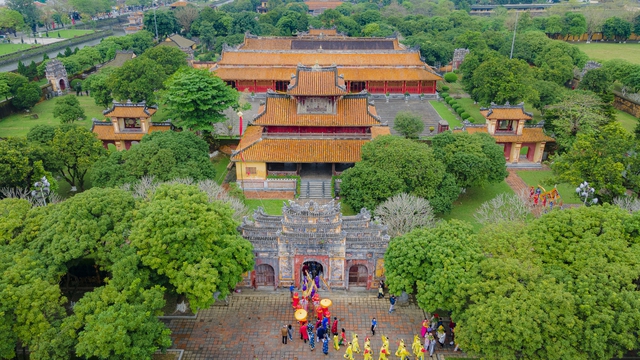
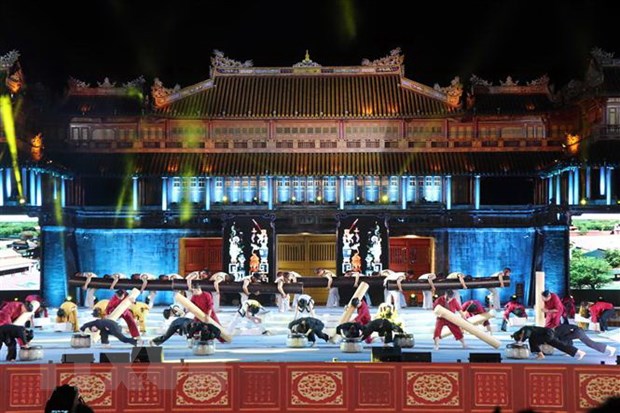
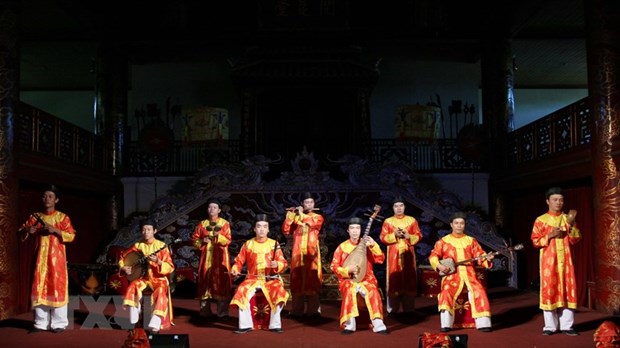
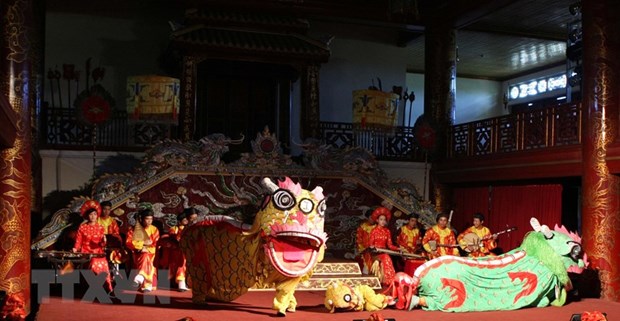


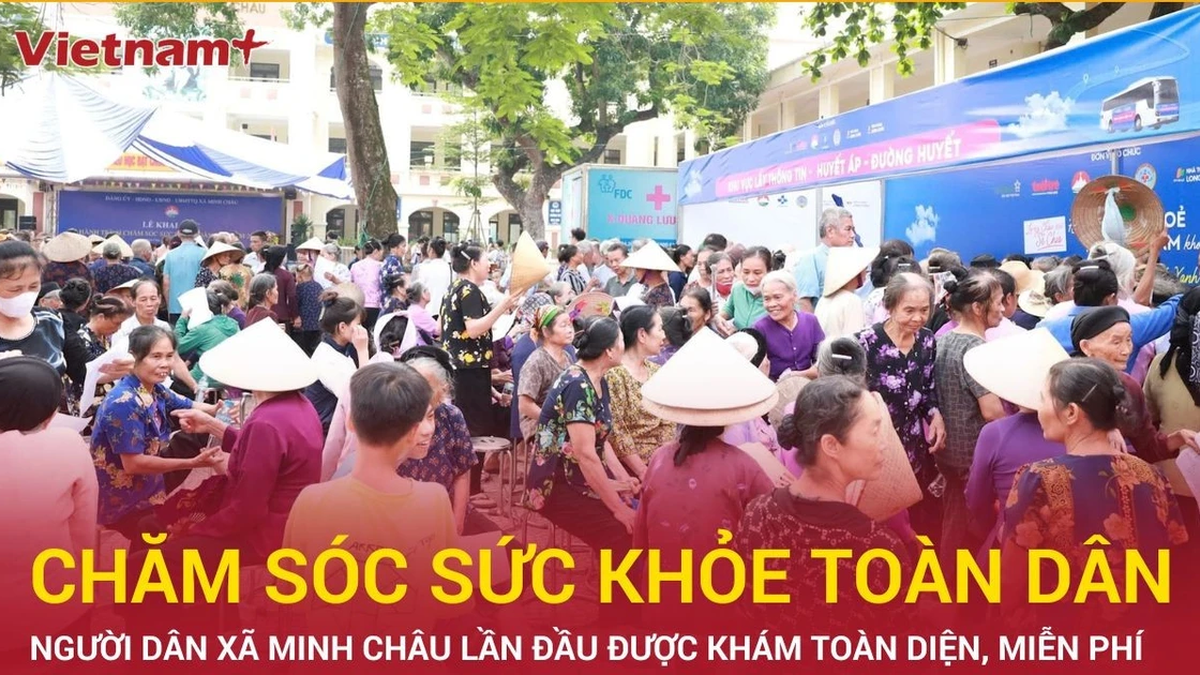






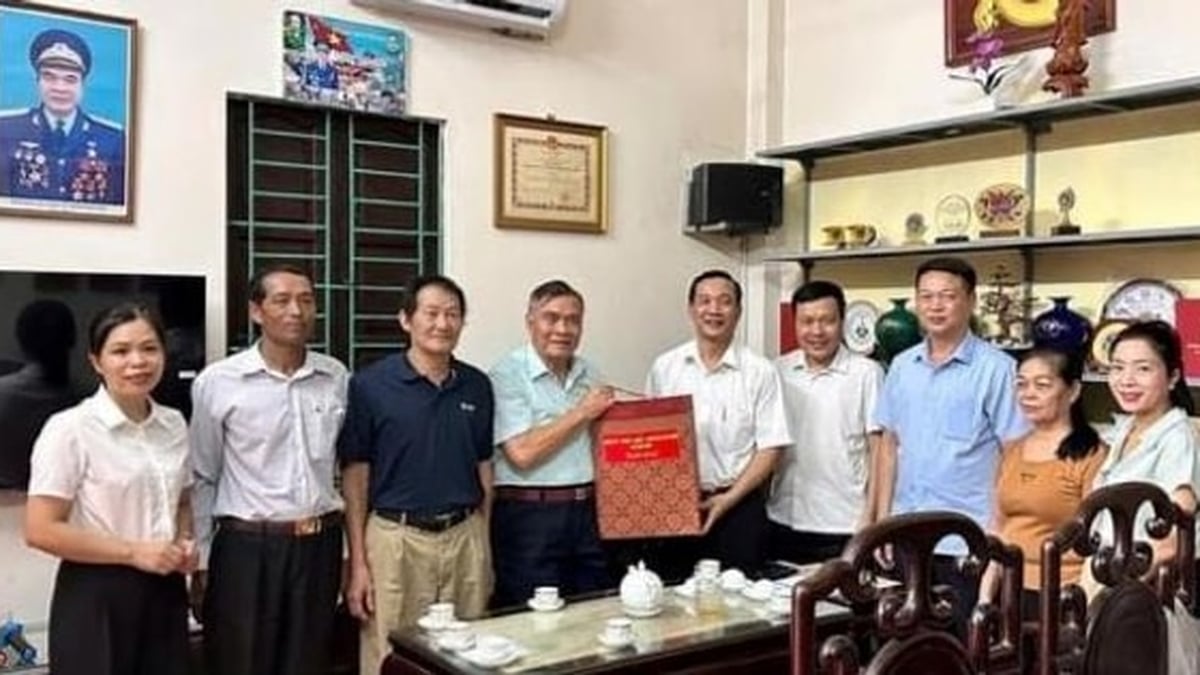























































































Comment (0)